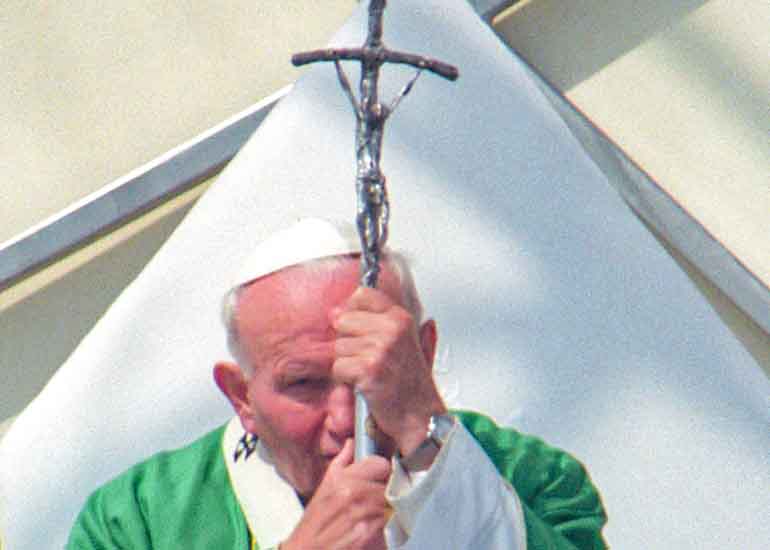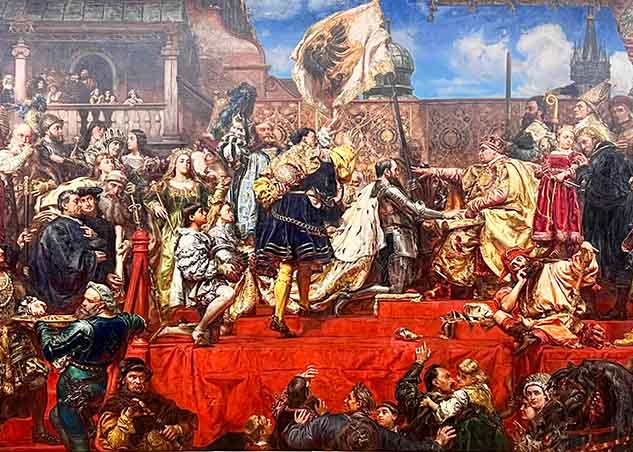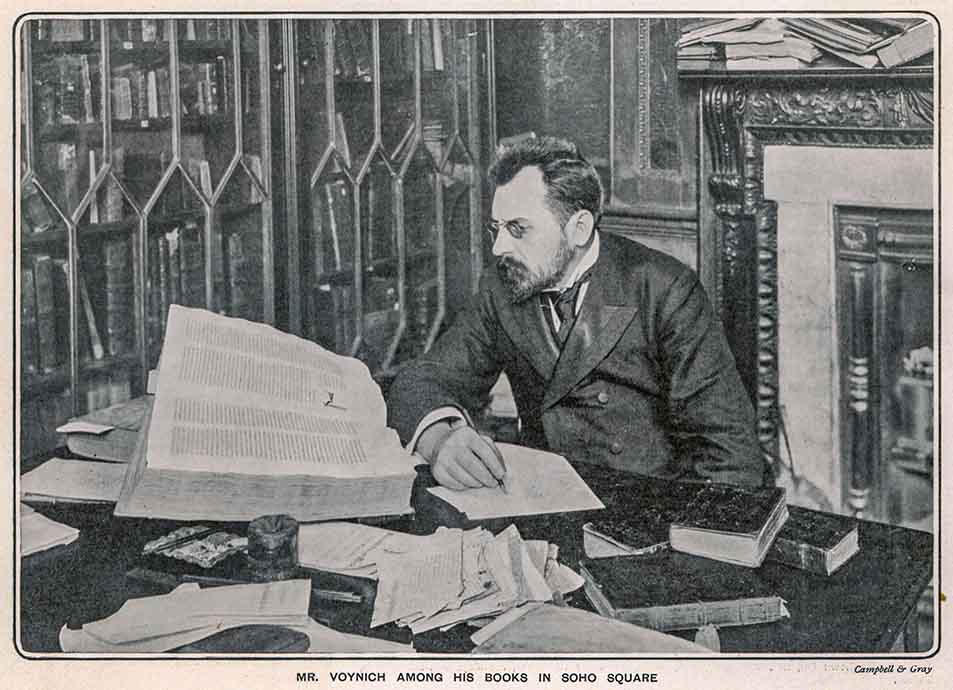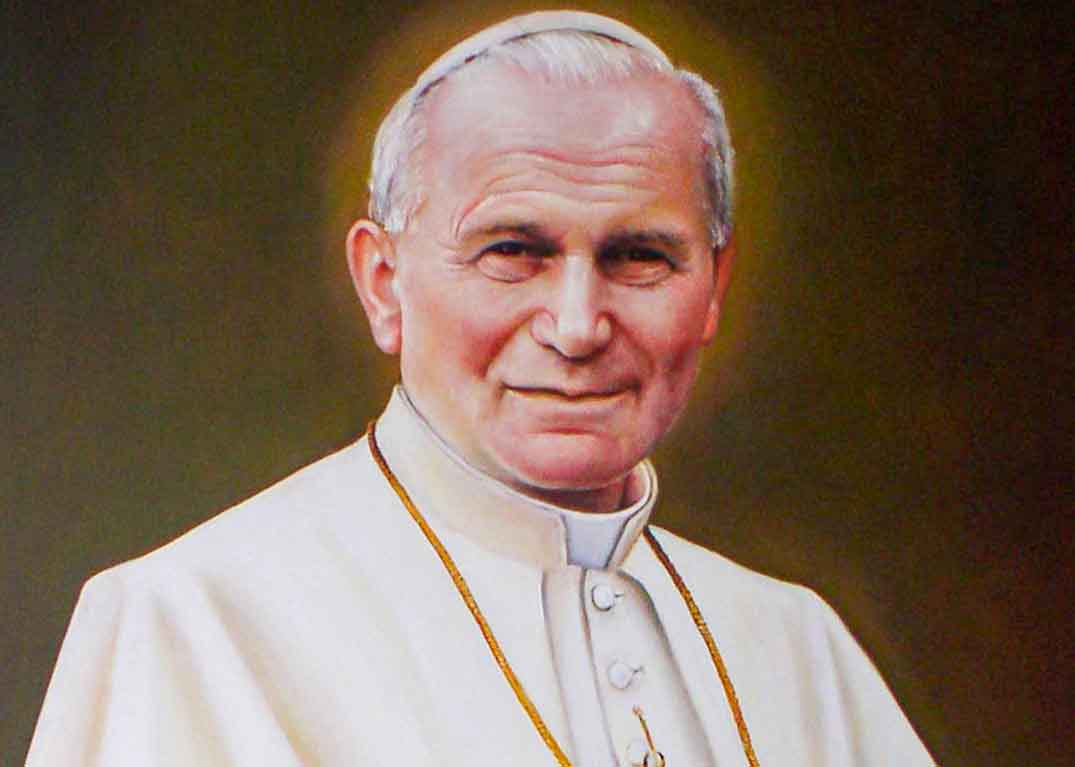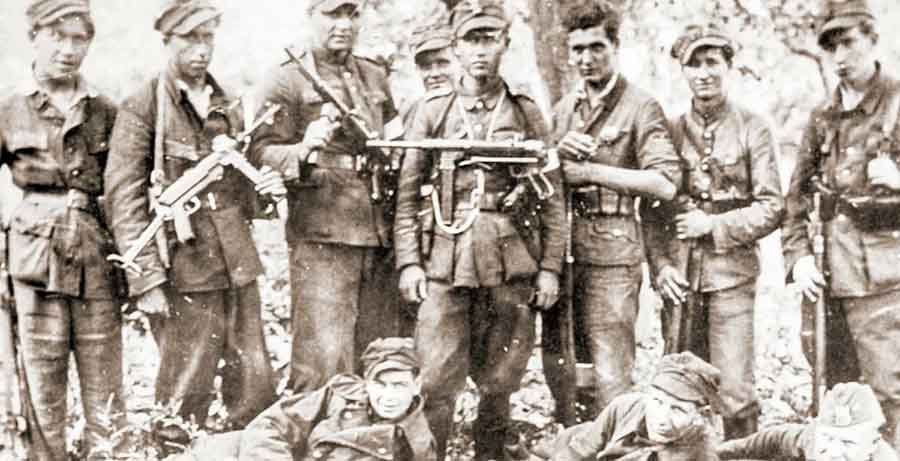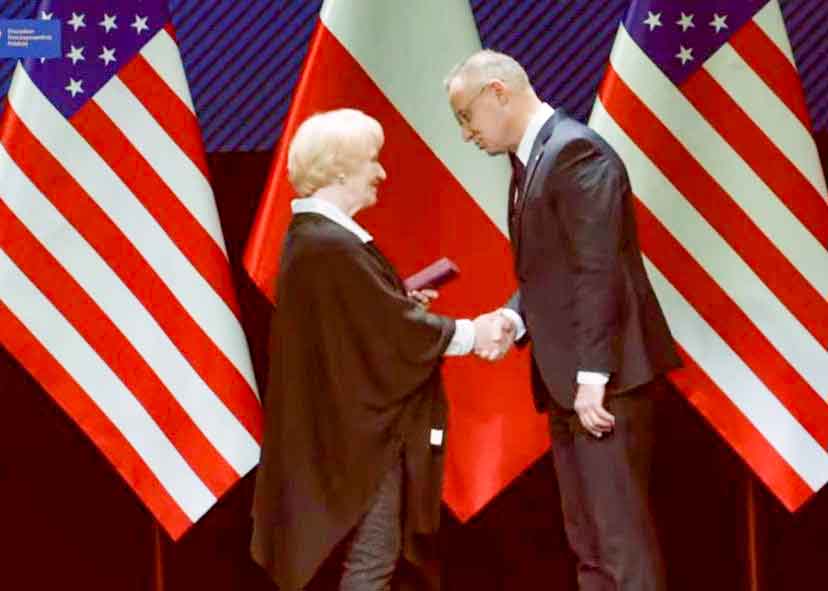Thinking with John Paul II is the key to understanding the challenges of the modern world and the role that Poland and Poles have to play not only in constructing their own world, but also the broader one.
Read more... Reading time 4 min.April 10, 2025 marks 500 years since Albert of Hohenzollern, the last Grand Master of the Teutonic Order and the first secular prince of the Prussian state, paid homage to the Polish King Sigismund I the Old.
Read more... Reading time 7 min.Scientists are still trying to decipher the mysterious manuscript, which was found in 1912 by a Polish antiquarian in London, Wilfrid Wojnicz. His life is no less mysterious and fascinating than the manuscript itself.
Read more... Reading time 6 min.The Congress of Gniezno, held in 1000, was a key political and religious event in Polish history. Emperor Otto III visited the tomb of St. Adalbert in Gniezno and met with Bolesław the Brave. During the congress, Poland's independence was symbolically recognized, and the metropolis of Gniezno was established.
Read more... Reading time 9 min.On April 2, 2005, at 9:37 p.m., Pope John Paul II died at the age of 84. Thus ended the pontificate of the 264th Pope, the successor of St. Peter, who held his office for 26 years.
Read more... Reading time 3 min.The Silent Unseen (pol. Cichociemni) were the elite of the Polish Armed Forces, designated for special tasks. They were among the best trained soldiers in the ranks of the Allies during World War II.
Read more... Reading time 4 min.This year marks 203 years since the birth (8 or 23 March 1822) of Ignacy Łukasiewicz. He is an exemplary inventor and social activist. Those who know him associate him with the invention of the kerosene lamp. However, he is a much more complex and interesting figure. And curiously, in his area he was known for something completely different.
Read more... Reading time 6 min.Tamara Łempicka - a painter born in Warsaw, is one of the most outstanding artists of the 20th century. Despite living and working abroad, she felt Polish until the end of her days and was able to express her emotions only in Polish. March 18 marks the 45th anniversary of her death.
Read more... Reading time 5 min.The tragedy of Poland, and of the Home Army generation, was that the Republic of Poland, attacked by two totalitarian powers bound by an agreement – Germany and the Soviet Union – did not regain independence after the end of World War II.
Read more... Reading time 10 min.Under the yoke of brutal occupation, Poles managed to create the Home Army – a well-organised armed force that served the entire free world.
Read more... Reading time 6 min.Editor Katarzyna Murawska was awarded the Knight's Cross of the Order of Merit of the Republic of Poland by President Andrzej Duda for her outstanding services to the Polish diaspora in the USA and the promotion of Polish culture. The awards ceremony took place on March 2, 2025 at the Copernicus Center in Chicago.
Read more... Reading time 4 min.Wojciech Materski
Although Russia has officially acknowledged the perpetration of the Katyn massacre, this truth is virtually absent from Russian historiography today. For it does not fit into the myth of the great victory of the war, any more than the Hitler-Stalin pact of 1939, the mass deportations, the enslavement of the Baltic republics, or the colossal scale of the Red Army's marauding in the final phase of the Second World War.
Read more...


